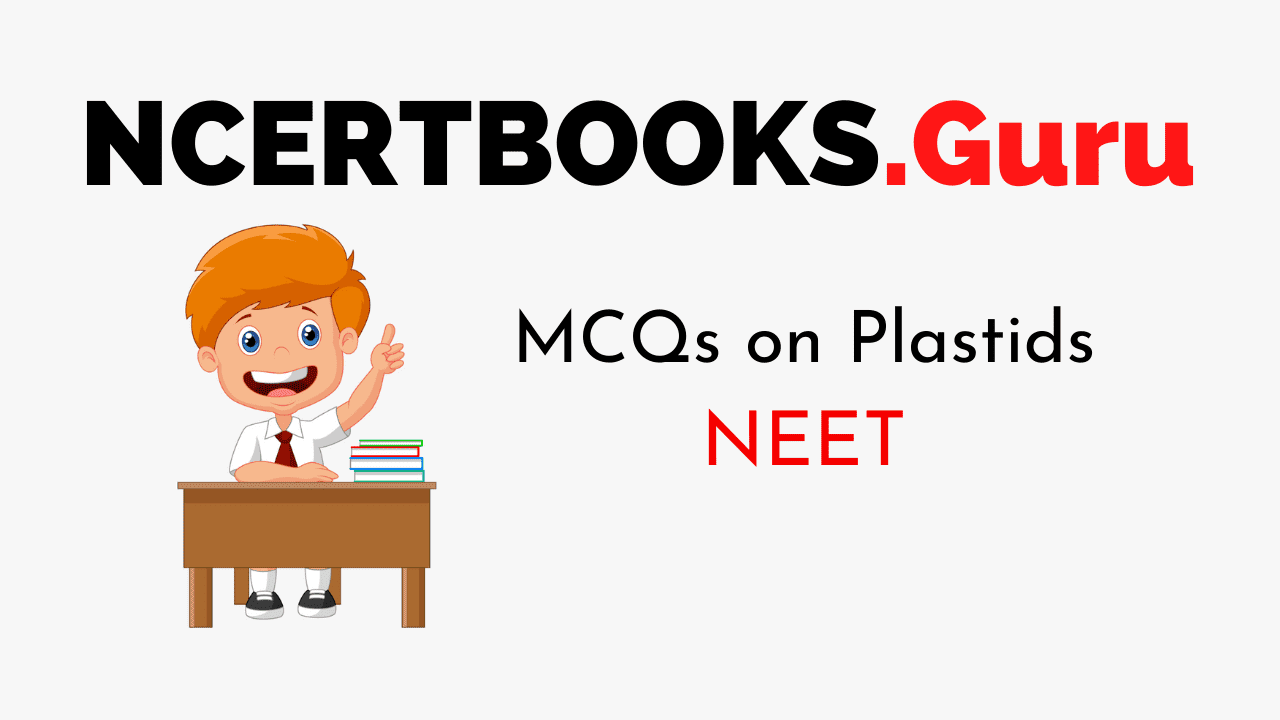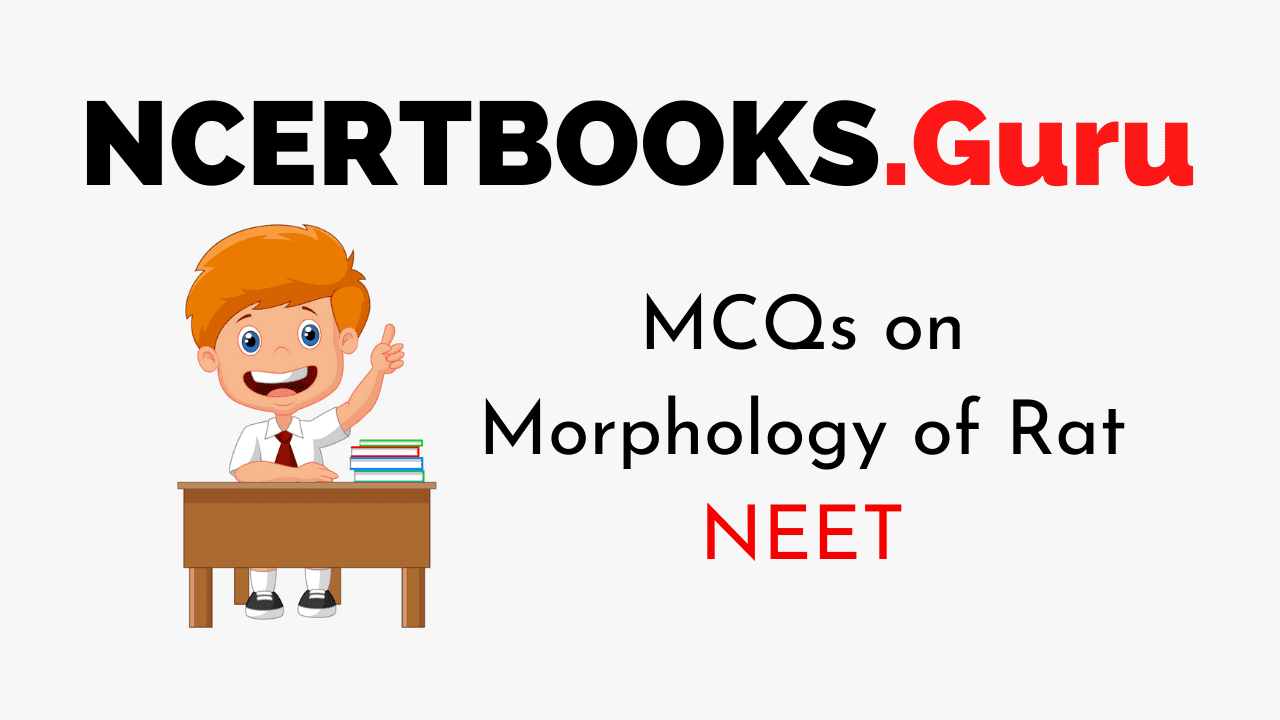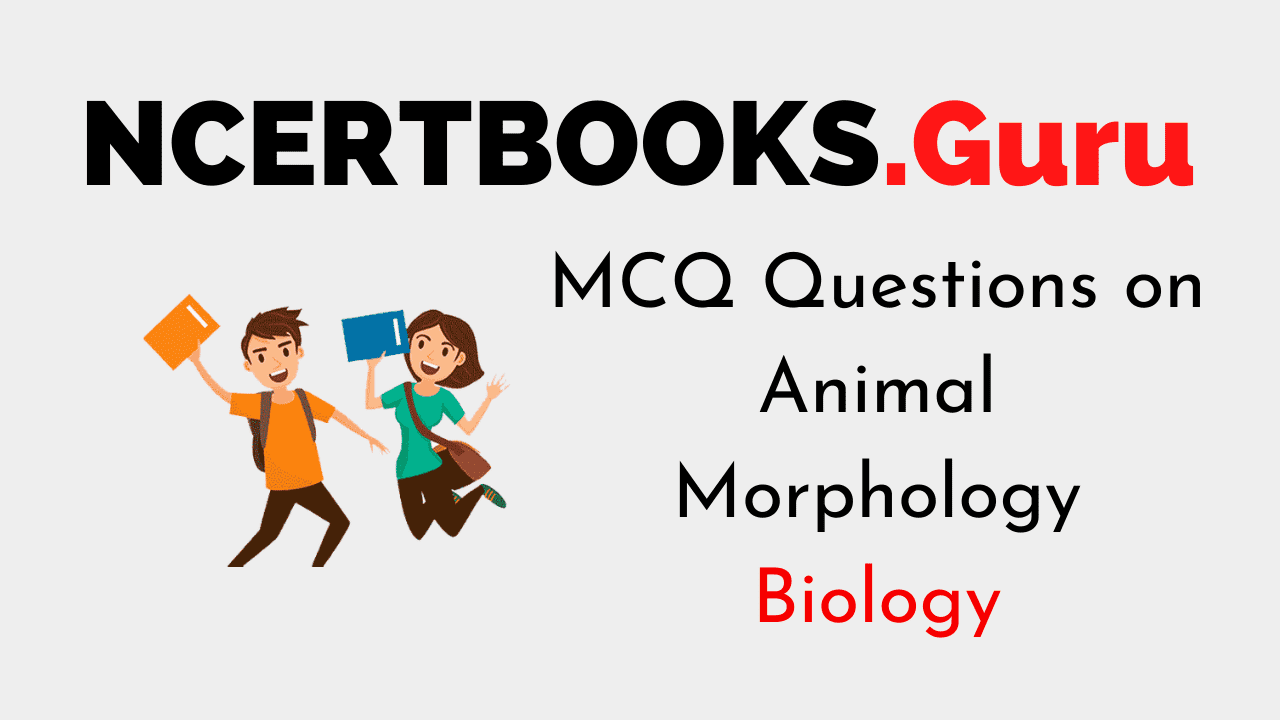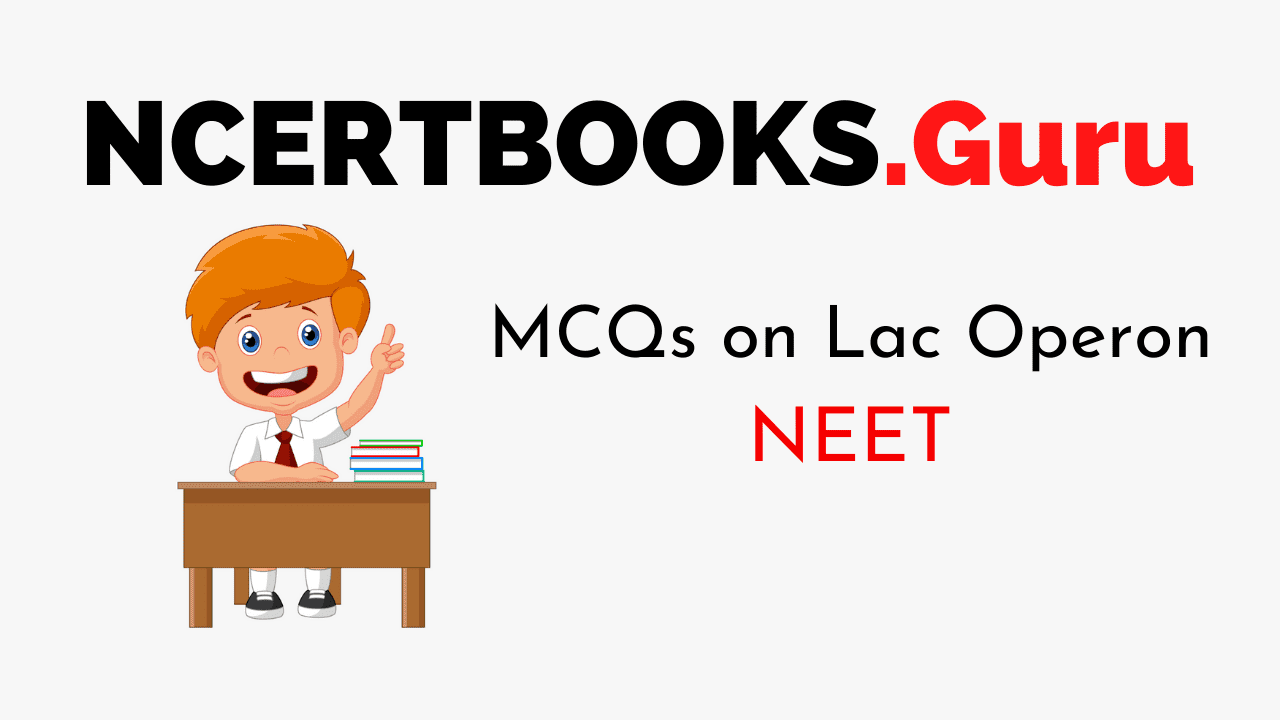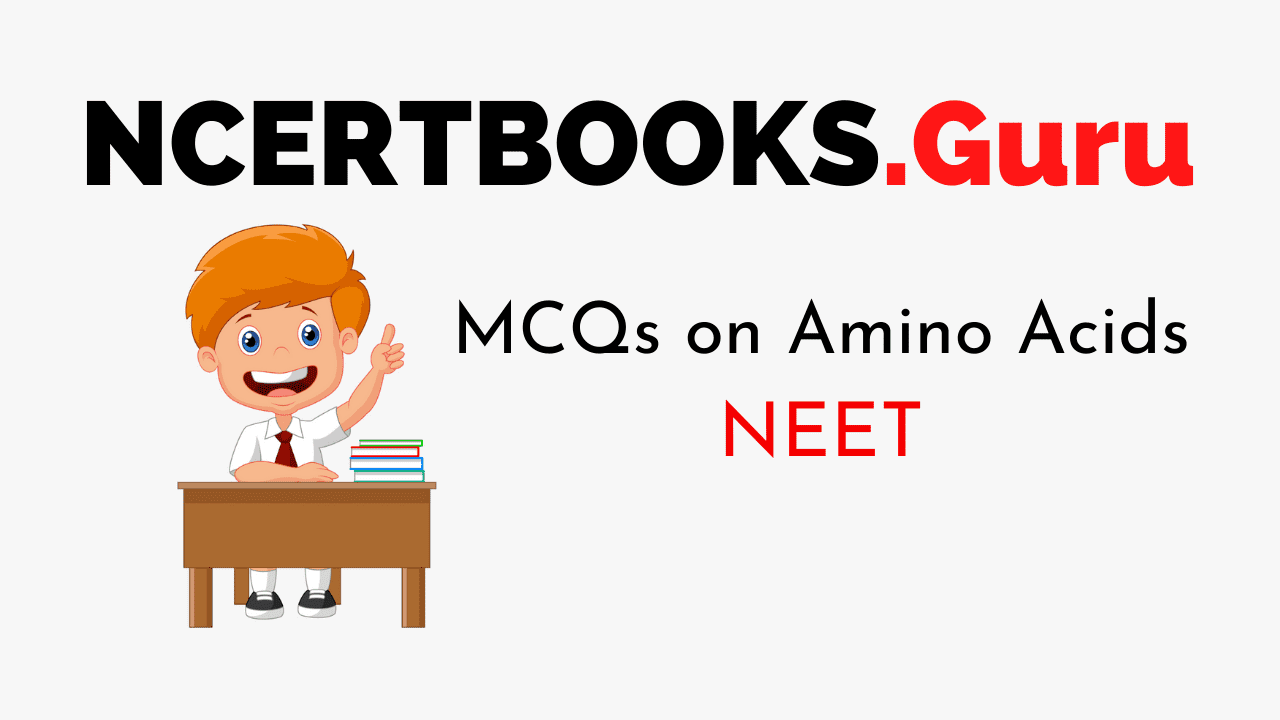Free PDF Download of CBSE Class 10 Science Chapter 5 Periodic Classification of Elements Multiple Choice Questions with Answers. MCQ Questions for Class 10 Science with Answers was Prepared Based on Latest Exam Pattern. Students can solve NCERT Class 10 Science Periodic Classification of Elements Multiple Choice Questions with Answers to know their preparation level.
Class 10 Science MCQs Chapter 5 Periodic Classification of Elements
1. Newlands relation is called
(a) Musical Law
(b) Law of Octaves
(c) Periodic Law
(d) Atomic Mass Law
Answer
Answer: b
2. Upto which element, the Law of Octaves was found applicable?
(a) Oxygen
(b) Calcium
(c) Cobalt
(d) Potassium
Answer
Answer: b
3. In Mendeleev’s Periodic Table, gaps were left for the elements to be discovered later. Which of the following elements found a place in the Periodic Table later?
(a) Chlorine
(b) Silicon
(c) Oxygen
(d) Germanium
Answer
Answer: d
4. At the time of Mendeleev, the number of elements known was
(a) 63
(b) 65
(c) 62
(d) 64
Answer
Answer: a
5. The properties of eka-aluminium predicted by Mendeleev are the same as the properties of later discovered element:
(a) Scandium
(b) Germanium
(c) Gallium
(d) Aluminium
Answer
Answer: c
6. An atom of an element has the electronic confi-guration 2,8,2. To which group does it belong?
(a) 4th group
(b) 6th group
(c) 3rd group
(d) 2nd group
Answer
Answer: d
7. The arrangement of elements in the Modem Periodic Table is based on their
(a) increasing atomic mass in the period
(b) increasing atomic number in the horizontal rows
(c) increasing atomic number in the vertical columns
(d) increasing atomic mass in the group
Answer
Answer: b
8. Where would you locate the element with electronic configuration 2, 8 in the Modern Periodic Table?
(a) Group 8
(b) Group 2
(c) Group 18
(d) Group 10
Answer
Answer: c
9. Element ‘X’ forms a chloride with the formula XCl2, which is a solid with high melting point. X would most likely be in the same group of the periodic table as:
(a) Si
(b) Mg
(c) Al
(d) Na
Answer
Answer: b
10. Which of these belong to the same period?
| Element |
A |
B |
C |
| Atomic number |
2 |
10 |
5 |
(a) A, B
(b) B, C
(c) C, A
(d) A, B and C
Answer/ Explanation
Answer: b
Explaination: Reason. B= 10 (2, 8), C = 5 (2, 3) Both have 2 periods.
11. Carbon belongs to the second period and Group 14. Silicon belongs to the third period and Group 14. If atomic number of carbon is 6, the atomic number of silicon is
(a) 7
(b) 14
(c) 24
(d) 16
Answer
Answer: b
12. Pick out the chemically most reactive elements from the given triads.
Li, Na, K F, Cl, Br
(a) Li and F
(b) Li and Br
(c) K and F
(d) K and Br
Answer
Answer: c
13. What is the atomic number of element of period 3 and group 17 of the Periodic Table?
(a) 10
(b) 4
(c) 17
(d) 21
Answer
Answer: c
14. Which one of the following statements is not correct about the trends in the properties of the elements of a period on going from left to right?
(a) The oxides become more acidic
(b) The elements become less metallic
(c) There is an increase in the number of valence electrons
(d) The atoms lose their electrons more easily
Answer
Answer: d
15. The elements A, B and C belong to groups 1, 14 and 17 respectively of the Periodic Table. Which two elements will form ionic compounds?
(a) A and B
(b) A and C
(c) B and C
(d) None
Answer
Answer: b
16. An element X from group 2 of the Periodic Table reacts with Y from group 17 to form a compound. Give the formula of the compound.
(a) XY2
(b) XY
(c) X2Y
(d) (XY)2
Answer
Answer: a
17. A metal ‘M’ is in the first group of the Periodic Table. What will be the formula of its oxide?
(a) MO
(b) M2O
(C) M2O3
(d) MO2
Answer
Answer: b
18. Name the neutral atom in the Periodic Table which has the same number of electrons as K+ and Cl-.
(a) Helium
(b) Argon
(c) Neon
(d) Krypton
Answer
Answer: b
19. An element X combines with oxygen to form an oxide XO. This oxide is electrically con¬ducting. Write the formula of the compound formed when X reacts with chlorine.
(a) XCl3
(b) XCl
(c) XCl2
(d) XCl5
Answer
Answer: c
20. An element X has mass number 40 and contains 21 neutrons in its atom. To which group of the Periodic Table does it belong?
(a) Group 1
(b) Group 4
(c) Group 2
(d) Group 3
Answer/ Explanation
Answer: a
Explaination: Reason. e = 19 (2, 8, 8,1)
21. Consider the following elements
20Ca, 8Or 18Ar, 16S, 4Be, 2He
Which of the above elements would you expect to be in group 16 of the Periodic Table?
(a) 20Ca and 16S
(b) 20Ca and 8O
(c) 18Ar and 16S
(d) 8O and 16S
Answer
Answer: d
22. An element ‘A’ belongs to the third period and group 16 of the Periodic Table. Find out the valency of A.
(a) Valency = 6
(b) Valency = 2
(c) Valency = 1
(d) Valency = 3
Answer
Answer: b
23. Which one of the following statements is not correct about the trends in the properties of the elements of a group on going down in a group?
(a) The chemical reactivity of metals increases.
(b) The metallic character of elements increases.
(c) The size of the atom increases.
(d) The valence electrons increase.
Answer
Answer: d
24. Which of the following set of elements is written in order of their increasing metallic character?
(a) Na Li K
(b) C Q N
(c) Mg Al Si
(d) Be Mg Ca
Answer
Answer: d
25. The atom of an element has electronic con-figuration 2, 8, 7. To which of the following elements would it be chemically similar?
(a) N(7)
(b) P(15)
(c) Na(11)
(d) F (9)
Answer/ Explanation
Answer: d
Explaination: Reason. Both have same number of valence electrons
26. Which of the following is a transition element ?
(a) Pb (b) As
(c) A1 (d) Ni
Answer
Answer: d
27. The metal which is hard and has high melting point and used in filaments of electrical bulbs is
(a) Ni
(b) Fe
(c) Pt
(d) W
Answer
Answer: d
28. The lightest liquid metal is
(a) Hg
(b) Ga
(c) Cs
(d) Fr
Answer
Answer: c
29. An element has 12 protons. The group and period to which this element belongs to is
(a) 2nd group, 3rd period
(b) 2nd group, 2nd period
(c) 3rd group, 2nd period
(d) 3rd group, 3rd period
Answer
Answer: a
30. An element has atomic number 17. To which group, period does it belong ? It is metal or non-metal ?
(a) 7th group, 2nd period, Non-metal
(b) 17th group, 3rd period, Non-metal
(c) 7th group, 3rd period, Metal
(d) 17th group, 3rd period, Metal
Answer
Answer: b
31. The element which has least tendency to lose electron is
(a) H
(b) Li
(c) He
(d) Ne
Answer
Answer: c
32. Which of the following is correct order of atomic size ?
(a) Li < Na < K < Rb < Cs (b) Li > Na > K > Rb > Cs
(c) Na < K < Li < Rb < Cs
(d) K < Na < Li < Rb < Cs
Answer
Answer: a
33. Which of the following is correct order of size ?
(a) I+ > I > I–
(b) I– > I > I+
(c) I > I+ > I–
(d) I > I– > I+
Answer
Answer: b
34. Which of the following oxide is most basic?
(a) Li2O
(b) Na2O
(c) K2O
(d) Cs2O
Answer
Answer: d
35. Which of the following hydroxides is most basic?
(a) Be(OH)2
(b) Ba(OH)2
(c) Ca(OH)2
(d) Mg(OH2
Answer
Answer: b
36. Which of the following is correct order of atomic size ?
(a) Cl < F < Br < I
(b) F < Cl < Br < I
(c) I < Br < Cl < F
(d) Br < I < Cl < F
Answer
Answer: b
37. The elements of group 16 are called
(a) Chalcogens
(b) Halogens
(c) Pnicogens
(d) Noble gases
Answer
Answer: a
38. Upto which element, the Law of Octaves was found to be applicable [NCERT Exemplar Problems]
(a) Oxygen
(b) Calcium
(c) Cobalt
(d) Potassium
Answer
Answer: b
39. In Mendeleev’s Periodic Table, gaps were left for the elements to be discovered later. Which of the following elements found a place in the periodic table later ? [NCERT Exemplar Problems]
(a) Germanium
(b) Chlorine
(c) Oxygen
(d) Silicon
Answer
Answer: a
40. Which of the given elements A, B, C, D and E with atomic number 2, 3, 7, 10 and 30 respectively belong to the same period? [NCERT Exemplar Problems]
(a) A, B, C
(b) B, C, D
(c) A, D, E
(d) B, D, E
Answer
Answer: b
41. Where would you locate the element with electronic configuration 2, 8 in the Modem Periodic Table ? [NCERT Exemplar Problems]
(a) Group 8
(b) Group 2
(c) Group 18
(d) Group 10
Answer
Answer: c
42. Which of the following is the outermost shell for elements of period 2 ? [NCERT Exemplar Problems]
(a) K shell
(b) L shell
(c) M shell
(d) N shell
Answer
Answer: b
43. Which one of the following elements exhibit maximum number of valence electrons ? [NCERT Exemplar Problems]
(a) Na
(b) Al
(c) Si
(d) P
Answer
Answer: d
44. Which of the following gives the correct increasing order of the atomic radii of O, F and N ? [NCERT Exemplar Problems]
(a) O, F, N
(b) N, F, O
(c) O, N, F
(d) F, O, N
Answer
Answer: d
45. Which among the following elements has the largest atomic radii ? [NCERT Exemplar Problems]
(a) Na
(b) Mg
(c) K
(d) Ca
Answer
Answer: c
46. WTiich of the following elements does not lose an electron easily ? [NCERT Exemplar Problems]
(a) Na
(b) F
(c) Mg
(d) Al
Answer
Answer: b
47. Which of the following elements will form an acidic oxide ? [NCERT Exemplar Problems]
(a) An element with atomic number 7
(b) An element with atomic number 3
(c) An element with atomic number 12
(d) An element with atomic number 19
Answer
Answer: a
48. The element with atomic number 14 is hard and forms acidic oxide and a covalent halide. To which of the following categories does the element belong? [NCERT Exemplar Problems]
(a) Metal
(b) Metalloid
(c) Non-metal
(d) Left-hand side element
Answer
Answer: b
49. Which one of the following does not increase while moving down the group of the periodic table ? [NCERT Exemplar Problems]
(a) Atomic radius
(b) Metallic character
(c) Valence electrons
(d) Number of shells in an element
Answer
Answer: c
50. Which of the following set of elements is written in order of their increasing metallic character ? [NCERT Exemplar Problems]

Answer
Answer: a
51. Which of the following is most reactive
(a) Li
(b) H
(c) Na
(d) K
Answer/Explanation
Answer: d
Explanation:
(d) K is most reactive due to larger size, can lose electron easily.
52. Which of the following is most reactive
(a) F2
(b) Cl2
(c) Br2
(d) I2
Answer/Explanation
Answer: a
Explanation:
(a) F2 is most reactive because it is smaller in size and can gain electron easily.
53. Chlorine (17) belongs to which group and period
(a) 7, 3
(b) 17, 3
(c) 1, 3
(d) 16, 3
Answer/Explanation
Answer: b
Explanation:
(b) Cl (17) 2, 8, 7 belongs to group 17 and 3rd period.
54. Silicon(14) belongs to class of
(a) Metal
(b) Non-metal
(c) Metalloids
(d) Ionic compound
Answer/Explanation
Answer: c
Explanation: (c) It is metalloid.
55. Which of the following is non-metal and to which group does it belong?
(a) Lead
(b) Gallium
(c) Bromine
(d) Cadmium
Answer/Explanation
Answer: c
Explanation:
(c) Bromine is a non-metal, belongs to group 17.
Direction (Q56 to Q60): In the following Questions, the Assertion and Reason have been put forward. Read the statements carefully and choose the correct alternative from the following:
(a) Both the Assertion and the Reason are correct and the Reason is the correct explanation of the Assertion.
(b) The Assertion and the Reason are correct but the Reason is not the correct explanation of the Assertion.
(c) Assertion is true but the Reason is false.
(d) The statement of the Assertion is false but the Reason is true.
56. Assertion: Group 1 and 2 element all are metals.
Reason: Group 1 and 2 elements can lose electrons early to form cations (positive ions)
Answer/Explanation
Answer: a
Explanation:
(a) Both the Assertion and the Reason are correct and the Reason is the correct explanation of the Assertion.
57. Assertion: B(5) belongs to group 13 and silicon belongs to group 14
Reason: B2O3 is acidic oxide where SiO2 is amphoteric oxide.
Answer/Explanation
Answer: b
Explanation:
(b) The Assertion and the Reason are correct but the Reason is not the correct explanation of the Assertion.
58. Assertion: K is more reactive than Na.
Reason: K is smaller in size than Na.
Answer/Explanation
Answer: c
Explanation:
(c) Assertion is true but the Reason is false.
59. Assertion: Fluorine is more reactive than chlorine.
Reason: Fluorine and chlorine belong to Group 17 called Halogen.
Answer/Explanation
Answer: b
Explanation:
(b) The Assertion and the Reason are correct but the Reason is not the correct explanation of the Assertion.
60. Assertion: There are 118 elements dis-covered so far.
Reason: Sulphur (16) belongs to Group 16 and belongs to 3rd period.
Answer/Explanation
Answer:
Explanation:
(b) The Assertion and the Reason are correct but the Reason is not the correct explanation of the Assertion.
61. On going down in a group of the periodic table, the size of atoms _____________ .
Answer/Explanation
Answer:
Explanation: increases
62. Those elements which have the same valence shell, belongs to the same _____________ of the periodic table.
Answer/Explanation
Answer:
Explanation: period
63. When an element from the left side of the periodic table combines with an elements from the right side of the periodic table, _____________ bond is formed.
Answer/Explanation
Answer:
Explanation: ionic
64. Group _____________ locate the element with electronic configuration 2,7 in the modem periodic table.
Answer/Explanation
Answer:
Explanation: 17
65. Dobereiner’s system of classification was failed to arrange all the elements in the form of _____________ having similar chemical properties.
Answer/Explanation
Answer:
Explanation: triads
66. Diagonal elements from boron to polonium are known as _____________ .
Answer/Explanation
Answer:
Explanation: metalloids
67. Mendeleev arranged all the 63 known elements in an increasing order of their atomic masses. [True/False]
Answer/Explanation
Answer:
Explanation: True
68. There are 7 groups and 18 periods in a modem periodic table. [True/False]
Answer/Explanation
Answer:
Explanation: False
69. Modem periodic law states that properties of elements are a periodic function of their atomic masses. [True/False]
Answer/Explanation
Answer:
Explanation: False
70. Each period marks a new electronic shell getting filled. [True/False]
Answer/Explanation
Answer:
Explanation: True
71. Valency of elements in a particular group is different. [True/False]
Answer/Explanation
Answer:
Explanation: False
72. The tendency to lose electrons from the outermost shell of an atom is called metallic character of an element. [True/False]
Answer/Explanation
Answer:
Explanation: True
Direction: Match Column I with Column II.
73.
| Column I |
Column II |
| (i) Most electronegative element |
A. Nitrogen |
| (ii) Group 16 element with largest atomic radius |
B. Polonium |
| (iii) Group 14 element with smallest atomic radius |
C. Boron |
| (iv) Group 13 element which is semiconductor |
D. Carbon |
| (v) ‘ Group 15 element which can form triple bond |
E. Fluorine |
Answer/Explanation
Answer:
Explanation:
(i) E
(ii) B
(iii) D
(iv) C
(v) A
74. How many elements are known the date? [DoE]
Answer/Explanation
Answer:
Explanation:
118 elements are known till date
75. How many elements are occuring naturally?
Answer/Explanation
Answer:
Explanation: 94
76. What was need of classification of elements? [DoE]
Answer/Explanation
Answer:
Explanation:
Classification of elements is needed to ‘more the study of elements every, e.g. elements of same group have similar properties study of a large number of elements is reduced to few group of elements.
77. What was the earliest attempt to classify elements?
Answer/Explanation
Answer:
Explanation:
They were classified into metals and non-metals.
78. How did Dobereiner classify the elements?
Answer/Explanation
Answer:
Explanation:
He classified elements in group of three, such that atomic weight of middle element is average of 1st and 3rd element.
79. Give one example of such triads.
Answer/Explanation
Answer:
Explanation: Li(7), Na(23), K(39)
80. Why was the system of classification of elements into triads not found suitable?
Answer/Explanation
Answer:
Explanation:
It is because all the elements discovered at that time could not be classified into triads.
81. What was the basis of classification of elements by Newland?
Answer/Explanation
Answer:
Explanation:
Increasing order of atomic mass
82. What was the basis of Mendeleev’s Periodic Law?
Answer/Explanation
Answer:
Explanation:
Increasing order of atomic weight.
83. Why did Mendeleev’s left some gaps?
Answer/Explanation
Answer:
Explanation:
These gaps were left for undiscovered elements.
84. Which chemical property of element was used by Mendeleev for classification?
Answer/Explanation
Answer:
Explanation:
Formula of hydrides and oxides.
85. Name any three metalloids. [DoE]
Answer/Explanation
Answer:
Explanation:
Boron, Silicon and Germanium.
86. State the modern periodic law of classification of elements. [Foreign 2014. AI 2013]
Answer/Explanation
Answer:
Explanation:
It states that “the properties of the elements are periodic functions of their atomic numbers.”
87. What was the basis of Modem Periodic Law?
Answer/Explanation
Answer:
Explanation: Atomic number
88. Who invented atomic number?
Answer/Explanation
Answer:
Explanation: Moseley
89. Why is atomic number more important?
Answer/Explanation
Answer:
Explanation:
Chemical properties depend upon number of valence electrons which depend upon atomic number.
90. On what basis we can classify elements?
Answer/Explanation
Answer:
Explanation:
Similarity in properties.
91. Could Modem Periodic Table solve all the problems?
Answer/Explanation
Answer:
Explanation:
Yes, except position of hydrogen.
92. Write the formula used to determine the maximum number of electrons which a shell in an atom can accommodate. [Foreign 2014. 2013]
Answer/Explanation
Answer:
Explanation:
Each shell has a maximum number of ‘2n2’ electrons, where n is the shell number.
93. Write the number of vertical columns in the modem periodic table. What are these columns called? [Delhi 2014]
Answer/Explanation
Answer:
Explanation:
There are 18 vertical columns in the modem periodic table. These vertical columns are called groups.
94. Write the number of horizontal rows in the modem periodic table. What are these rows called? [Delhi 2014. 2013]
Answer/Explanation
Answer:
Explanation:
There are seven horizontal rows in the modem periodic table. These rows are called periods.
95. What do you mean by valency? [DoE]
Answer/Explanation
Answer:
Explanation:
Valency is number of electron last or gained or shored by atome of an element.
96. State one reason for placing Mg and Ca in the same group of the periodic table.
Answer/Explanation
Answer:
Explanation:
They have same number of valence electrons.
97. Give reason why noble gases are placed in separate group in modem periodic table. [Foreign 2013]
Answer/Explanation
Answer:
Explanation:
They have completely filled outermost shell.
98. Why properties of elements are different belong to same period? [DoE]
Answer/Explanation
Answer:
Explanation:
It is because they different in number of valence electrons which determines the properties of elements.
99. On moving from left to right in the second period when happens to the number of valence electrons?
Answer/Explanation
Answer:
Explanation:
Number of valence electrons increases from left to right in the second period.
100. How does atomic size vary from left to right in a period?
Answer/Explanation
Answer:
Explanation:
Atomic size decreases from left to right in a period.
101. List any two properties of the elements belonging to the first group of the modem periodic table. [AI 2014]
Answer/Explanation
Answer:
Explanation:
First group elements are also known as alkali metals.
(a) These elements exhibit +1 valency.
(b) These are very reactive and not found freely in nature.
102. Which has larger atomic radius Ca (20) or K (19). [CBSE 2016]
Answer/Explanation
Answer:
Explanation:
K (19) has larger atomic radius due to less effective number charge.
103. Out of the three elements P, Q and R having atomic numbers 11, 17 and 19 respectively, which two elements will show similar properties and why? [Foreign 2014]
Answer/Explanation
Answer:
Explanation:
P(11): 2,8,1 R(19): 2, 8, 8, 1 Q(17): 2, 8, 7
Elements P, R will show similar properties as they belong to they same group with valency 1 due to same number of valance electrons.
104. Write the atomic numbers of two elements ‘X” and ‘ Y’ having electronic configurations 2, 8, 2 and 2, 8, 6 respectively. [AI 2014]
Answer/Explanation
Answer:
Explanation:
Atomic number of X = 2 + 8 + 2 = 12
Atomic number of Y = 2 + 8 + 6=16
105. The atomic numbers of three elements X, Y and Z are 3, 11 and 17 respectively. State giving reason which two elements will show similar chemical properties. [AI 2013]
Answer/Explanation
Answer:
Explanation:
X and Y will show similar chemical properties as these have same valence electrons. ‘X’ 2,

106. Explain why the number of elements in third period is 8?
Answer/Explanation
Answer:
Explanation:
3rd shell can have maximum eight electrons if it is valence shell. Therefore, number of elements are equal to 8 in third period.
107. Out of Li and K, which have stronger metallic character and why? [CBSF. 2016]
Answer/Explanation
Answer:
Explanation:
K because it has larger size and more tendency to lose electron.
108. “Flourine is more electronegative than Iodine.” Give reason in support of this. [DoE]
Answer/Explanation
Answer:
Explanation:
Flourine has smaller size than iodine, has more tendency to attract shared pair of electron towards itself.
109. An element has atomic number 17 to which group and period closer it belong. [CBSE 2016]
Answer/Explanation
Answer:
Explanation:
Its electronic configuration is 2, 8, 7. It belongs to group 17 because it has 7 valence electrons. It belongs to 3rd period because it has 3 shalls.
110. H, Li. Na, K placed in group. Why? [CBSE 2015]
Answer/Explanation
Answer:
Explanation:
Tt is because they have same number of valence electron i.e. 10
Fill in the blanks
1. The concept of grouping elements into triads was given by ……… .
2. Mendeleev’s basis for the Periodic Table is ……… .
3. The basis for Modern Periodic Table is ……… .
4. (a) Metallic character ……… down the group.
(b) Atomic size ……… along the period.
(c) Electronegative character ……… down the group.
5. Isotopes belong to the same ……… in the Periodic Table.
6. Halogens belong to group ……… of the Periodic Table.
7. An element having electronic configuration (2, 8, 2) belongs to the ……… group.
8. Atoms of different elements with the same number of occupied shells are placed in the same ……… .
9. Valency of elements ……… and then ……… as we move across the period while it remains the same down the group.
10. Non-metals are located on the ……… side of the Periodic Table.
Answers
1. Dobereiner
2. atomic mass
3. atomic no.
4. (a) increases
(b) decreases
(c) decreases
5. position
6. 17
7. 12th
8. Period
9. increases, decreases
10. right
We hope the given MCQ Questions for Class 10 Science Periodic Classification of Elements with Answers will help you. If you have any query regarding CBSE Class 10 Science Chapter 5 Periodic Classification of Elements Multiple Choice Questions with Answers, drop a comment below and we will get back to you at the earliest.
